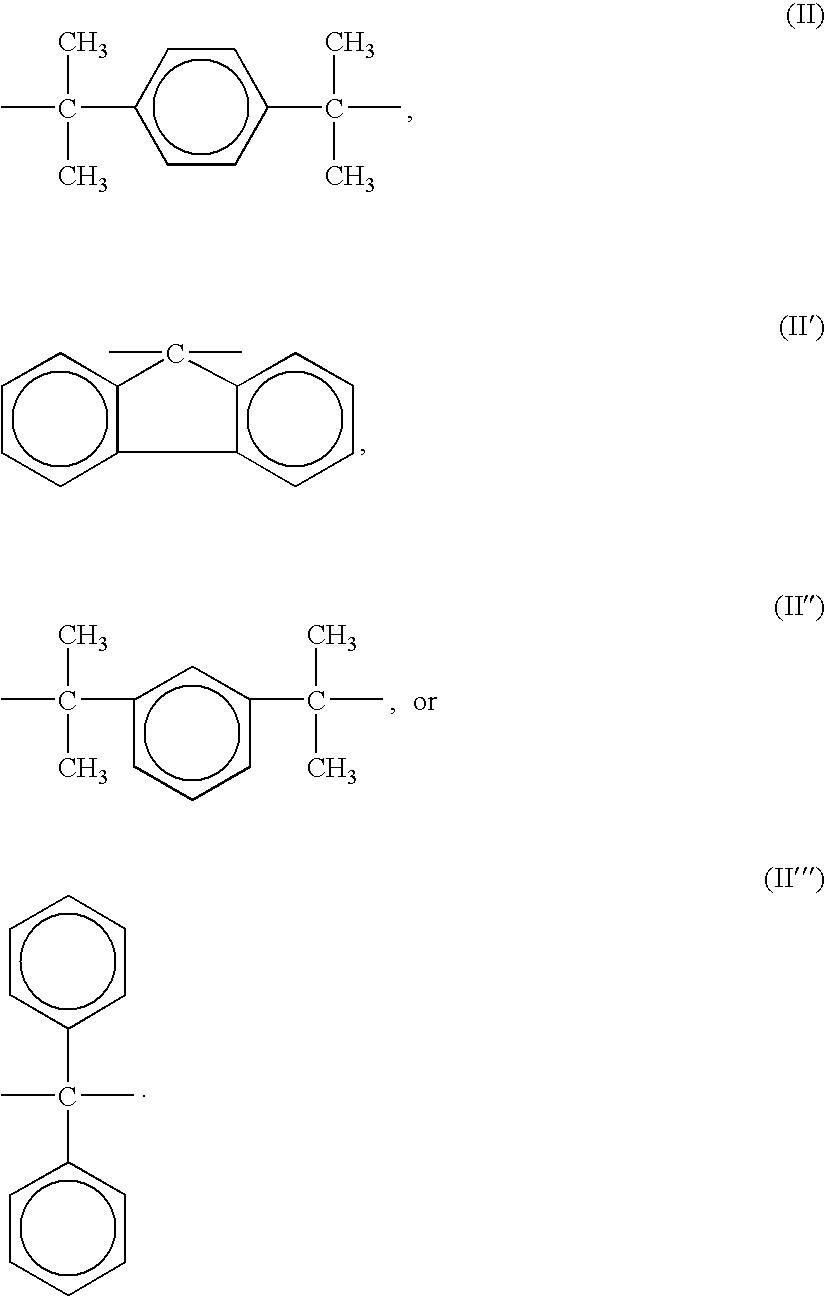Polycarbonate prepolymer for solid phase polymerization and process for producing polycarbonate
a polycarbonate and solid-state polymerization technology, applied in the direction of physical/chemical process catalysts, organic compounds/hydrides/coordination complex catalysts, chemical apparatus and processes, etc., can solve the problems of requiring toxic phosgene, occurrence of corrosion in production apparatuses, and complicated processes of conventional transesterification processes, so as to achieve efficient production of high-quality polycarbonates
- Summary
- Abstract
- Description
- Claims
- Application Information
AI Technical Summary
Benefits of technology
Problems solved by technology
Method used
Image
Examples
example 1
[0107]A mixture of 0.500 g of triphenylphosphine-modified styrene-divinylbenzene copolymer (content of triphenylphosphine unit: 0.25 meq / g) and 10 mL of toluene was stirred at room temperature for one hour in a nitrogen atmosphere. After adding a solution of 0.576 g (1.50 mmol) of dichlorobis(benzonitrile)palladium in 30 mL of toluene, the suspension was further stirred for 24 h at room temperature in a nitrogen atmosphere. Then, the brown solids produced were collected by filtration, washed with toluene and dried under reduced pressure, to obtain 0.531 g of a catalyst composition Pd—PPh2-PS. The content in the catalyst composition was 0.29 mmol / g for palladium and 0.22 mmol / g for phosphorous when determined by elementary analysis.
[0108]Into a 30 -mL autoclave, were hermetically charged 41.6 mg (12 μmol in terms of Pd) of the catalyst composition Pd—PPh2—PS, 0.95 g (4.16 mmol) of bisphenol A (BPA), 0.158 g (1.05 mmol) of PTBP, 0.0676 g (0.625 mmol) of benzoquinone, 14.5 mg (24 μmol)...
example 2
[0110]Except for using 0.269 g (1.79 mmol) of PTBP, the procedure of Example 1 was repeated. The number average molecular weight (Mn), the weight average molecular weight (Mw), the molecular weight distribution (Mw / Mn) and the ratio (PTBP / OH) between aryl carbonate groups (PTBP) and hydroxy groups (OH) constituting the terminal groups, each measured on the prepolymer for solid state polymerization and the polycarbonate, are shown in Table 1.
example 3
[0111]Except for using 0.42 g (2.80 mmol) of PTBP, the procedure of Example 1 was repeated. The number average molecular weight (Mn), the weight average molecular weight (Mw), the molecular weight distribution (Mw / Mn) and the ratio (PTBP / OH) between aryl carbonate groups (PTBP) and hydroxy groups (OH) constituting the terminal groups, each measured on the prepolymer for solid state polymerization and the polycarbonate, are shown in Table 1.
PUM
| Property | Measurement | Unit |
|---|---|---|
| boiling point | aaaaa | aaaaa |
| molecular weight distribution | aaaaa | aaaaa |
| molecular weight distribution | aaaaa | aaaaa |
Abstract
Description
Claims
Application Information
 Login to View More
Login to View More - R&D
- Intellectual Property
- Life Sciences
- Materials
- Tech Scout
- Unparalleled Data Quality
- Higher Quality Content
- 60% Fewer Hallucinations
Browse by: Latest US Patents, China's latest patents, Technical Efficacy Thesaurus, Application Domain, Technology Topic, Popular Technical Reports.
© 2025 PatSnap. All rights reserved.Legal|Privacy policy|Modern Slavery Act Transparency Statement|Sitemap|About US| Contact US: help@patsnap.com



